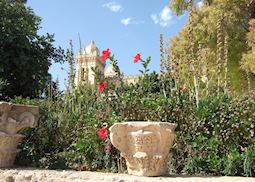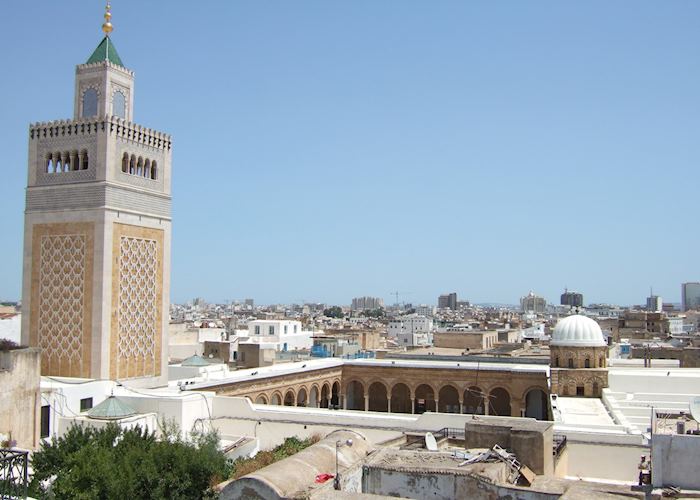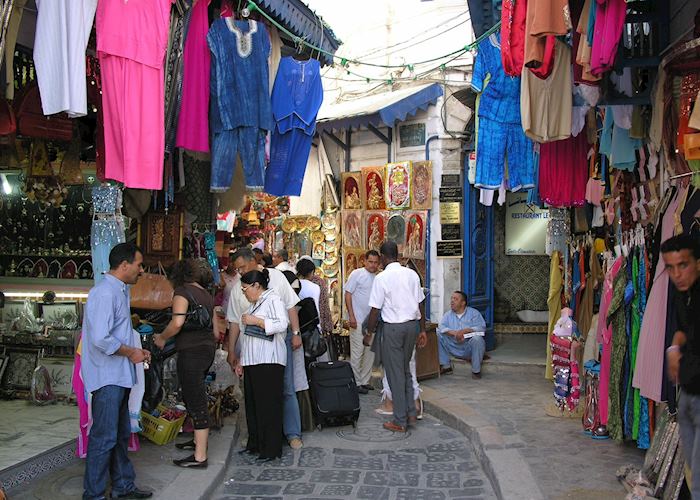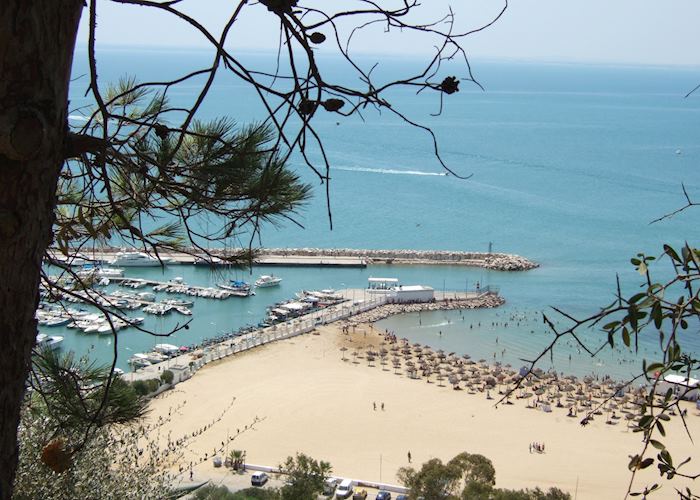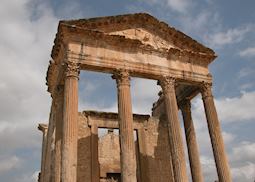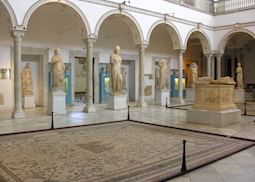Medina comes from the Arabic word for city, and it refers to the old quarter of Tunis.
Your first entry to the Medina of Tunis will most likely come through the Bab Bahr at Place de la Victoire, the Gate into the medina from Avenue Bourguiba. At once you head into the narrow streets, wherein shopkeepers continue the tradition of selling their most diverse goods. Scratch the surface, and one will encounter little more than the tourist shops, which have hidden jewels of lamps and leather mixed in among tackier stuffed camels and key rings. However, the further you go into the Tunis Medina and its souqs, the more you will realise the range of things it contains, from everything one could possibly need for a wedding to a range of beautifully restored restaurants that serve sumptuous and traditional Tunisian cuisine, to the central mosque, the Zitouna.
The Zitouna is in many ways emblematic of the Tunis Medina — most of what you see today goes back to the 19th century, although its distinctive minaret is a full millennium older. Its name means "olive tree", and comes from the mosque's founder who was said to have taught the Quran whilst sat under an olive tree. Until the 1950s, the Zitouna Mosque also served as a religious university, well renowned and comparable to the Azhar in Cairo as a seat of learning. You are able to enter the courtyard, but non-Muslims may not enter the mosque itself.
